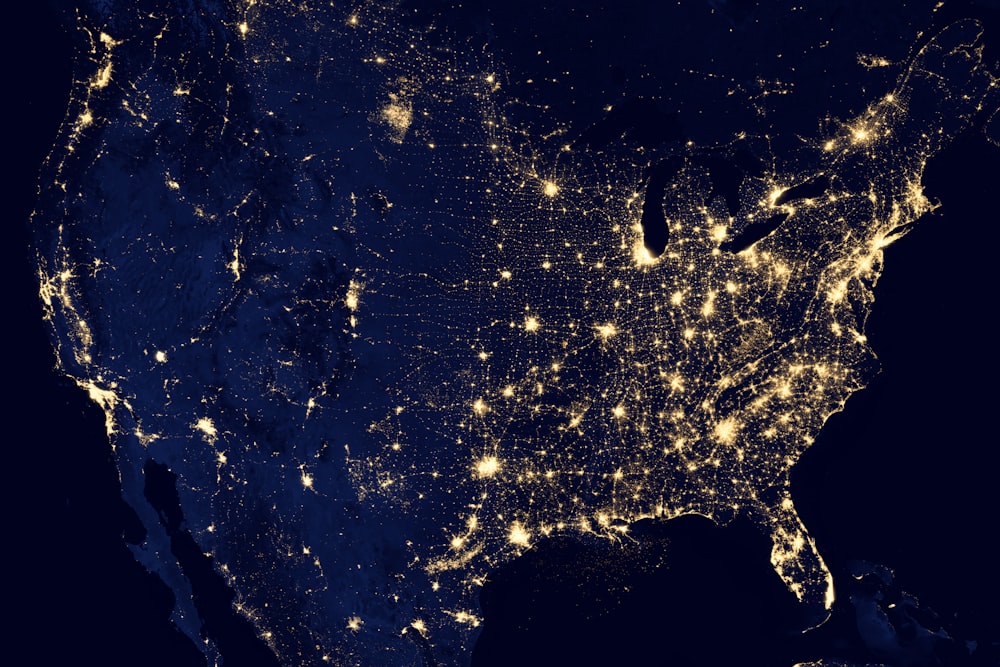Over the past few years, IoT has become one of the most vital technologies of the twenty-first century. Now that we can connect day-to-day objects kitchen appliances, cars, thermostats, infant monitors to the internet by way of embedded devices, seamless communication is feasible between people, processes, and things.
By the potential of low-priced computing, the cloud, large data, analytics, and mobile technologies, bodily matters can share and gather records with minimal human intervention. In this hyper-connected world, digital structures can record, monitor, and alter each interplay between linked things. The bodily world meets the digital world and they cooperate.

Photo by Marvin Meyer from Unsplash.com
What Technologies Have Made IoT Possible?
While the thinking of IoT has been in existence for a lengthy time, a collection of recent advances in several exceptional technologies has made it practical.
- Access to low-cost, low-power sensor technology. Affordable and dependable sensors are making IoT science possible for more manufacturers.
- Connectivity. A host of network protocols for the net has made it effortless to join sensors to the cloud and other “things” for environment-friendly information transfer.
- Cloud computing platforms. The amplify in the availability of cloud platforms enables each group and consumers to get admission to the infrastructure they want to scale up barring truly having to manipulate it all.
- Machine learning and analytics. With advances in computers getting to know and analytics, along with getting the right of entry to different and huge amounts of statistics saved in the cloud, corporations can gather insights faster and extra easily. The emergence of these allied applied sciences continues to push the boundaries of IoT and the information produced by IoT also feeds these technologies.
- Conversational artificial talent (AI). Advances in neural networks have added natural-language processing (NLP) to IoT devices (such as digital non-public assistants Alexa, Cortana, and Siri) and made them appealing, affordable, and doable for domestic use.
What Is Industrial IoT?

Industrial IoT (IIoT) refers to the utility of IoT science in industrial settings, especially with appreciate to instrumentation and manage sensors and devices that interact with cloud technologies. Recently, industries have used machine-to-machine conversation (M2M) to acquire wi-fi automation and control. But with the emergence of cloud and allied technologies (such as analytics and desktop learning), industries can gain a new automation layer and with it create new revenue and enterprise models. IIoT is occasionally called the fourth wave of the industrial revolution, or Industry 4.0. The following are some frequent uses for IIoT:
- Smart manufacturing
- Preventive and predictive maintenance
- Smart strength grids
- Smart cities
- Connected and clever logistics
- Smart digital supply chains
Unlock Business Value with IoT
As IoT will become more good-sized in the marketplace, businesses are capitalizing on the super commercial enterprise cost it can offer. These benefits include:
- Deriving data-driven insights from IoT facts to assist better manage the business
- Increasing productiveness and efficiency of enterprise operations
- Creating new commercial enterprise fashions and income streams
- Easily and seamlessly connecting the physical commercial enterprise world to the digital world to drive quick time to value
What Are IoT Applications?
- Business-Ready, SaaS IoT Applications
IoT purposes are prebuilt software-as-a-service (SaaS) purposes that can analyze and present captured IoT sensor statistics to enterprise customers by using dashboards.
IoT functions use laptop mastering algorithms to analyze massive quantities of connected sensor data in the cloud. Using real-time IoT dashboards and alerts, you reap visibility into key overall performance indicators, information for suggest time between failures and different information. Machine learning-based algorithms can discover tools anomalies and ship alerts to users and even set off automated fixes or proactive countermeasures.
With cloud-based IoT applications, business users can shortly enhance existing methods for furnish chains, consumer service, human resources, and economic services. There’s no want to recreate entire business processes.
What Are the Top IoT Applications?
The potential of IoT to grant sensor data as well as enable device-to-device communication is using a wide set of applications. The following are some of the most famous purposes and what they do.
- Create new efficiencies in manufacturing via laptop monitoring and product-quality monitoring. Machines can be consistently monitored and analyzed to make sure they are performing within the required tolerances. Products can additionally be monitored in actual time to perceive and tackle nice defects.
- Improve the monitoring and “ring-fencing” of bodily assets. Tracking permits agencies to rapidly determine asset location. Ring-fencing approves them to make positive that high-value assets are covered from theft and removal.
- Use wearables to display human fitness analytics and environmental conditions. IoT wearables enable people to better recognize their fitness and allow docs to remotely monitor patients. This technological know-how additionally allows groups to music the health and safety of their employees, which is mainly useful for employees employed in hazardous conditions.
- Drive efficiencies and new chances in present processes. One instance of this is the use of IoT to expand efficiency and security in fleet management. Companies can use IoT fleet monitoring to direct trucks, in real-time, to enhance efficiency.
- Enable business technique changes. An example of this is the use of IoT gadgets to reveal the fitness of faraway machines and set off provider calls for preventive maintenance. The ability to remotely screen machines is additionally enabling new product-as-a-service enterprise models, where clients no longer want to buy a product however instead pay for its usage.
What Industries Can Benefit from IoT?
Organizations satisfactory suitable for IoT are these that would advantage from the use of sensor units in their commercial enterprise processes.
- Manufacturing
Manufacturers can obtain an aggressive advantage through using production-line monitoring to enable proactive protection on equipment when sensors discover an impending failure. Sensors can genuinely measure when production output is compromised. With the help of sensor alerts, manufacturers can shortly test tools for the accuracy or cast off it from manufacturing until it is repaired. This allows groups to limit running costs, get higher uptime, and enhance asset performance management.
- Automotive
The car industry stands to recognize good-sized blessings from the use of IoT applications. In addition to the benefits of applying IoT to production lines, sensors can discover impending tools failure in motors already on the street and can alert the driver with important points and recommendations. Thanks to aggregated data gathered via IoT-based applications, car manufacturers and suppliers can analyze extra about how to maintain cars walking and auto owners informed.
- Transportation and Logistics
Transportation and logistical structures gain from a range of IoT applications. Fleets of cars, trucks, ships, and trains that carry inventory can be rerouted based totally on climate conditions, automobile availability, or driver availability, thanks to IoT sensor data. The stock itself ought to additionally be geared up with sensors for track-and-trace and temperature-control monitoring. The food and beverage, flower, and pharmaceutical industries often raise temperature-sensitive stock that would advantage substantially from IoT monitoring functions that send indicators when temperatures upward shove or fall to a level that threatens the product.
- Retail
IoT functions enable retail businesses to manage inventory, enhance customer experience, optimize furnish chain, and decrease operational costs. For example, clever shelves geared up with weight sensors can accumulate RFID-based data and send the records to the IoT platform to robotically reveal stock and set off alerts if objects are strolling low. Beacons can push focused provides and promotions to customers to provide an engaging experience.
- Public Sector
The advantages of IoT in the pubic area and different service-related environments are in a similar way wide-ranging. For example, government-owned utilities can use IoT-based purposes to notify their users of mass outages and even smaller interruptions of water, power, or sewer services. IoT applications can acquire statistics concerning the scope of an outage and set up resources to assist utilities to recover from outages with increased speed.
- Healthcare
IoT asset monitoring presents more than one advantage to the healthcare industry. Doctors, nurses, and orderlies often need to understand the specific location of patient-assistance belongings such as wheelchairs. When a hospital’s wheelchairs are equipped with IoT sensors, they can be tracked from the IoT asset-monitoring software so that all of us looking for one can quickly discover the nearest reachable wheelchair. Many clinic assets can be tracked this way to make certainly acceptable utilization as nicely as monetary accounting for the bodily property in each department.
- General Safety across All Industries
In addition to tracking bodily assets, IoT can be used to improve employee safety. Employees in hazardous environments such as mines, oil and gasoline fields, and chemical and electricity plants, for example, want to understand the prevalence of a hazardous match that may affect them. When they are linked to IoT sensor-based applications, they can be notified of accidents or rescued from them as rapidly as possible. IoT functions are additionally used for wearables that can display human health and environmental conditions. Not only do these kinds of functions assist people higher to apprehend their health, they additionally permit doctors to monitor patients remotely.
How Is IoT Changing the World? Take a Look at Connected Cars.

IoT is reinventing the car using enabling related cars. With IoT, auto proprietors can function their motors remotely by, for example, preheating the vehicle earlier than the driver receives in it or by using remotely summoning a vehicle by way of phone. Given IoT’s capability to allow device-to-device communication, motors will even be in a position to book their provider appointments when warranted.
The connected automobile approves vehicle manufacturers or dealers to turn the car ownership mannequin on its head. Previously, manufacturers have had an arms-length relationship with individual shoppers (or none at all). Essentially, the manufacturer’s relationship with the auto ended once it was once sent to the dealer. With related cars, vehicle makers or sellers can have a continuous relationship with their customers. Instead of promoting cars, they can cost drivers utilization fees, imparting a “transportation-as-a-service” to the usage of autonomous cars. IoT approves producers to improve their cars continually with new software, a sea-change distinction from the regular model of auto ownership in which motors at once depreciate in overall performance and value.
Stay tuned with our blog...Next Blog coming soon
0 Comments
Please don't span on this blog
Emoji